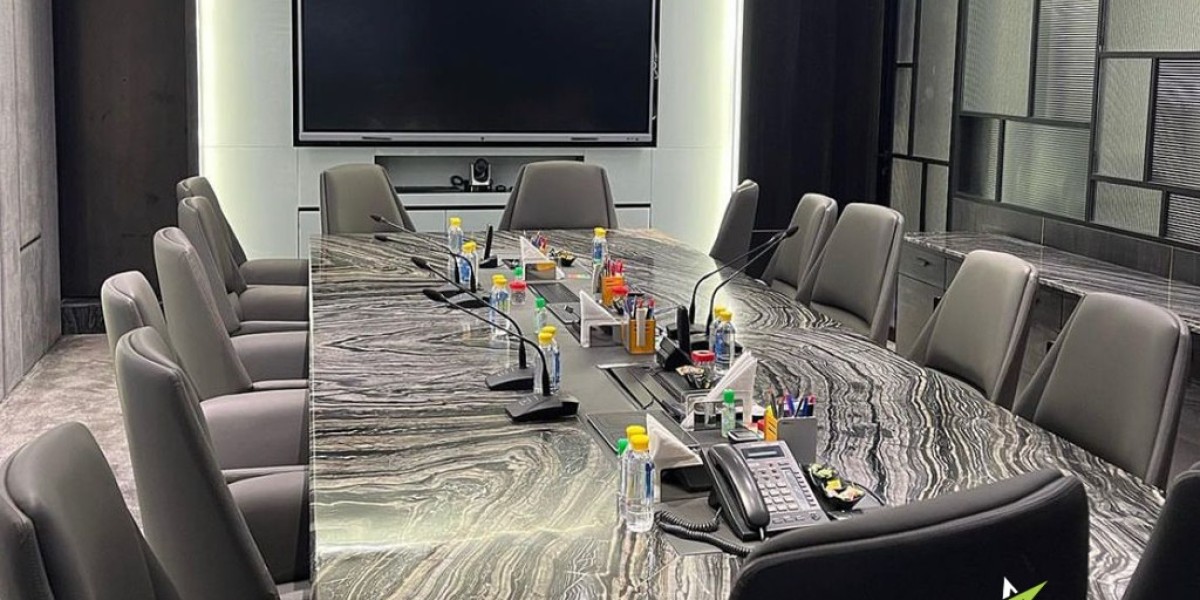Understanding NFC Technology and Business Cards
Near Field Communication technology has revolutionized the way professionals share contact information and build business relationships. NFC business cards represent a significant evolution from traditional paper cards, offering dynamic, interactive, and environmentally sustainable alternatives that can transform how you network and present your professional brand.
The fundamental principle behind NFC technology lies in electromagnetic induction between two devices when they come within close proximity, typically within four centimeters. This short-range communication protocol enables instant data transfer without requiring complex pairing procedures or manual input from users. When someone taps their smartphone against your NFC business card, the embedded chip automatically triggers a predetermined action, such as opening your digital business card, saving your contact information, or directing them to your professional website.
Modern smartphones have increasingly adopted NFC capabilities as standard features, making this technology accessible to a broader audience than ever before. Both Android and iOS devices support NFC functionality, though the implementation varies slightly between platforms. Android devices generally offer more flexibility in NFC interactions, while iOS devices require specific formatting and may have certain limitations in how they process NFC tags.
The advantages of NFC business cards extend far beyond mere convenience. These digital solutions eliminate the waste associated with traditional paper cards while providing unlimited opportunities for updates and customization. Unlike printed cards that become outdated the moment your contact information changes, NFC business cards can be updated in real-time, ensuring your networking contacts always have access to your most current information.
Professional networking scenarios benefit tremendously from NFC technology implementation. Trade shows, conferences, business meetings, and casual networking events become more efficient when participants can instantly share comprehensive contact information, social media profiles, portfolio links, and other relevant professional details with a simple tap. This seamless interaction often creates a more memorable impression than traditional card exchange methods.
Security considerations play a crucial role in NFC business card implementation. The short-range nature of NFC communication provides inherent security benefits, as potential eavesdropping requires extremely close proximity. However, users should remain aware of potential security implications and choose platforms that prioritize data protection and user privacy.
Choosing the Right NFC Business Card Solution
Selecting the appropriate NFC business card solution requires careful consideration of your specific professional needs, technical requirements, and budget constraints. The market offers various options ranging from simple programmable NFC tags to comprehensive digital business card platforms with advanced analytics and customization features.
Physical NFC card options include traditional card-sized devices that closely resemble conventional business cards, adhesive NFC stickers that can be attached to existing materials, and innovative form factors such as NFC-enabled keychains, wristbands, or phone cases. Each format offers distinct advantages depending on your industry, personal preferences, and networking situations.
Traditional NFC business cards maintain the familiar feel and professional appearance of standard business cards while incorporating embedded NFC chips. These cards often feature printed information alongside NFC functionality, providing a hybrid approach that accommodates both tech-savvy contacts and those who prefer traditional information sharing methods. Premium options may include metal construction, custom designs, and enhanced durability features.
Software platform considerations significantly impact your long-term satisfaction with NFC business cards. Leading platforms offer varying levels of customization, analytics, integration capabilities, and user management features. Some solutions focus primarily on contact information sharing, while others provide comprehensive digital business card ecosystems with portfolio integration, appointment scheduling, and customer relationship management features.
Subscription-based platforms typically offer more robust features, regular updates, and customer support, while one-time purchase options may provide basic functionality without ongoing costs. Enterprise solutions cater to organizations requiring multiple user management, branding consistency, and advanced analytics capabilities. Small businesses and individual professionals might find simpler, cost-effective solutions more appropriate for their needs.
Integration capabilities should align with your existing professional tools and workflows. Consider platforms that seamlessly connect with your customer relationship management system, email marketing tools, social media accounts, and professional portfolio platforms. This integration ensures that NFC business card interactions contribute effectively to your overall digital marketing and networking strategies.
Customization options vary significantly between platforms, affecting how well your NFC business card reflects your professional brand and personality. Advanced platforms offer extensive design customization, multiple layout options, multimedia content integration, and dynamic content management capabilities. Basic solutions may provide limited template options with minimal personalization features.
Planning Your Digital Business Card Content
Strategic content planning forms the foundation of an effective NFC business card implementation. Unlike traditional business cards with limited space constraints, digital business cards offer virtually unlimited content possibilities, making thoughtful organization and prioritization essential for optimal user experience.
Essential contact information remains the cornerstone of any business card, digital or otherwise. Your full name, professional title, company affiliation, phone number, email address, and physical address (when appropriate) should be prominently featured and easily accessible. However, digital formats allow for additional contact methods such as video calling links, messaging app contacts, and social media handles that extend networking possibilities beyond traditional communication channels.
Professional branding elements require careful integration to maintain consistency across all marketing materials and touchpoints. Your company logo, brand colors, typography choices, and visual design elements should align with your established brand identity while optimizing for digital display formats. High-resolution images and graphics ensure professional presentation across various devices and screen sizes.
Social media integration has become increasingly important in professional networking contexts. Including links to your LinkedIn profile, Twitter account, Instagram portfolio, or industry-specific platforms enables contacts to engage with your professional content and maintain ongoing connections beyond initial meetings. Consider which social media platforms most effectively represent your professional brand and contribute to your networking objectives.
Portfolio and work sample integration can significantly enhance your NFC business card's effectiveness, particularly for creative professionals, consultants, and service providers. Links to your professional website, online portfolio, case studies, testimonials, and recent project examples provide contacts with immediate access to your work quality and professional capabilities. Video introductions, project walkthroughs, and client testimonials can create more engaging and memorable impressions.
Value-added content distinguishes exceptional NFC business cards from basic contact sharing tools. Consider including links to helpful resources, industry insights, exclusive offers, or educational content that provides immediate value to new contacts. This approach transforms your business card from a simple information sharing tool into a valuable resource that recipients are more likely to retain and reference.
Contact management preferences should guide how you structure information collection and follow-up processes. Some professionals prefer immediate contact information capture, while others focus on providing comprehensive information for later reference. Consider implementing contact forms, newsletter subscriptions, or meeting scheduling links that facilitate ongoing professional relationships.
Setting Up Your NFC Business Card Platform
Platform setup involves several technical and strategic decisions that will impact your NFC business card's effectiveness and long-term utility. The initial configuration process typically requires account creation, profile setup, content organization, and technical integration with your existing professional tools and systems.
Account registration processes vary between platforms but generally require basic professional information, email verification, and subscription selection when applicable. Choose username and profile information that align with your professional brand and will remain relevant as your career evolves. Many platforms allow account customization and rebranding options that can be valuable for maintaining professional consistency.
Profile configuration represents the foundation of your digital business card experience. Complete all available profile sections thoroughly, as comprehensive profiles typically perform better in networking scenarios and provide more value to contacts. Upload high-quality professional photographs, company logos, and any relevant multimedia content that enhances your professional presentation.
Contact information setup requires attention to accuracy and completeness. Verify all phone numbers, email addresses, website links, and social media profiles before finalizing your configuration. Test each contact method to ensure proper functionality and professional presentation. Consider implementing contact preferences that guide how new connections should reach you for different types of professional inquiries.
Customization options should be explored thoroughly to maximize your NFC business card's alignment with your professional brand and networking objectives. Most platforms offer template selections, color scheme customization, layout modifications, and content organization features. Invest time in creating a visually appealing and professionally appropriate presentation that represents your brand effectively.
Integration setup with existing professional tools can significantly enhance your NFC business card's utility and impact on your overall networking and marketing efforts. Connect your customer relationship management system, email marketing platform, social media accounts, and professional portfolio to create a cohesive digital presence that supports your networking objectives.
Privacy and security settings deserve careful attention during initial setup. Review data sharing policies, contact information visibility options, and user interaction tracking features to ensure alignment with your privacy preferences and professional requirements. Configure notification settings to stay informed about NFC business card interactions without creating overwhelming communication volumes.
Designing Your Digital Business Card Interface
Interface design significantly impacts user experience and professional impression creation during NFC business card interactions. Effective design balances visual appeal, information accessibility, and user navigation simplicity to create positive and memorable networking experiences.
Visual hierarchy guides user attention and information consumption patterns during digital business card interactions. Position your most important information prominently, using typography, color, and spacing to create clear information priorities. Professional headshots, company logos, and contact information should be immediately visible, while supplementary information can be organized in easily accessible secondary sections.
Color scheme selection should reflect your professional brand while ensuring optimal readability across various devices and lighting conditions. Consider how your chosen colors will appear on different smartphone screens and adjust accordingly. Maintain sufficient contrast between text and background elements to ensure accessibility compliance and professional presentation standards.
Typography choices impact both aesthetic appeal and information accessibility. Select fonts that reflect your professional brand while prioritizing readability across various device sizes and screen resolutions. Maintain consistent font usage throughout your digital business card to create a cohesive and professional appearance. Avoid overly decorative fonts that may compromise legibility or professional credibility.
Content organization affects user navigation and information discovery during networking interactions. Group related information logically, using clear section headings and intuitive navigation elements. Consider the typical user journey and organize content to support natural information-seeking patterns. Essential contact information should be immediately accessible, while additional resources and portfolio materials can be organized in easily discoverable sections.
Mobile optimization ensures optimal user experience across various smartphone models and operating systems. Test your design on different devices, screen sizes, and orientations to verify consistent functionality and visual presentation. Consider touch interface requirements, loading times, and data usage implications for users in various networking environments.
Interactive elements can enhance user engagement and information retention during NFC business card interactions. Consider incorporating clickable social media icons, direct calling buttons, email composition links, and calendar integration features that facilitate immediate action-taking. However, balance interactivity with simplicity to avoid overwhelming users or creating unnecessarily complex interactions.
Programming Your NFC Chip
NFC chip programming involves configuring the embedded technology to trigger your desired actions when contacted by compatible devices. This technical process requires understanding of NFC data formats, device compatibility considerations, and optimal user experience design principles.
Data encoding formats determine how information is stored and transmitted through NFC chip interactions. The most common format for business card applications is NDEF (NFC Data Exchange Format), which provides standardized data structure that ensures compatibility across different devices and operating systems. NDEF records can contain various data types including URLs, contact information, text messages, and application launch commands.
URL encoding represents the most versatile approach for NFC business card implementation. By programming your chip to direct users to a specific web address, you maintain complete control over the user experience and can update content without reprogramming physical chips. This approach also ensures compatibility with both Android and iOS devices, though user experience may vary slightly between platforms.
Contact information encoding allows direct transfer of contact details to users' address books without requiring internet connectivity or intermediate web pages. This approach creates seamless user experiences but limits your ability to update information and track interactions. Consider the trade-offs between convenience and flexibility when choosing between URL and contact information encoding approaches.
Programming tools and software vary in complexity and functionality, ranging from simple mobile applications to comprehensive NFC management platforms. Many NFC business card providers offer proprietary programming tools that streamline the configuration process while ensuring optimal compatibility with their platforms. Third-party NFC programming applications provide more flexibility but may require additional technical knowledge.
Chip placement and physical considerations affect both functionality and user experience during NFC interactions. Standard business card locations include the center or upper portion of the card, though some designs integrate chips near specific visual elements or branding features. Ensure adequate clearance around the chip to accommodate various smartphone sizes and NFC sensor locations.
Testing procedures should verify functionality across multiple devices and operating systems before finalizing your NFC business card implementation. Test tap sensitivity, response time, and user experience consistency across various smartphone models. Document any device-specific behaviors or limitations that might affect networking interactions.
Testing and Optimization
Comprehensive testing ensures optimal functionality and user experience across various devices, operating systems, and networking scenarios. Systematic testing approaches help identify potential issues and optimization opportunities before widespread distribution and implementation.
Device compatibility testing should encompass popular smartphone models across Android and iOS platforms. Different devices may exhibit varying NFC sensor sensitivity, response times, and user interface presentations. Create a testing matrix that includes recent and older device models to ensure broad compatibility with your target networking audience.
Operating system variations can significantly impact NFC business card functionality and user experience. Android devices generally offer more flexible NFC interactions, while iOS devices may require specific formatting and present certain limitations. Test your implementation across different operating system versions to identify and address any compatibility issues.
Network connectivity scenarios affect user experience when NFC chips direct users to web-based digital business cards. Test functionality under various network conditions including high-speed WiFi, cellular data connections, and limited connectivity situations. Optimize loading times and consider offline functionality options for networking environments with poor connectivity.
User experience testing involves observing real users interacting with your NFC business card in realistic networking scenarios. Gather feedback about tap sensitivity, information accessibility, navigation intuitiveness, and overall impression creation. This qualitative feedback can reveal optimization opportunities that technical testing might miss.
Performance metrics should be established to measure your NFC business card's effectiveness and identify areas for improvement. Track interaction rates, contact information capture, follow-up communication initiation, and user engagement with supplementary content. These metrics provide valuable insights for ongoing optimization efforts.
A/B testing different design elements, content organization, and user experience approaches can help optimize your NFC business card's effectiveness. Test variations in visual design, information hierarchy, call-to-action placement, and content presentation to identify the most effective approaches for your specific networking objectives and target audience.
Distribution and Implementation Strategies
Strategic distribution and implementation approaches maximize your NFC business card's networking impact and ensure effective integration with your professional activities and relationship-building efforts.
Networking event strategies should consider venue characteristics, audience demographics, and event formats when implementing NFC business card distribution. Trade shows, conferences, and professional meetups each present unique opportunities and challenges for NFC technology usage. Prepare backup traditional business cards for situations where NFC functionality may be limited or inappropriate.
Professional meeting integration requires consideration of meeting formats, participant comfort levels with technology, and appropriate timing for NFC business card sharing. One-on-one meetings may allow for more detailed explanation and demonstration of NFC functionality, while group settings might require simpler interaction approaches.
Industry-specific considerations affect how Digital Business Cards are received and utilized within different professional contexts. Technology-focused industries may embrace NFC innovation more readily than traditional sectors. Adapt your presentation and explanation approach to align with industry norms and participant expectations.
Follow-up communication strategies should leverage the data and insights gathered through NFC business card interactions. Personalize follow-up messages based on the information contacts accessed and the context of your networking interaction. Use NFC interaction data to inform your ongoing relationship-building efforts.
Team implementation approaches require coordination and consistency when multiple team members use NFC business cards. Establish guidelines for content consistency, branding alignment, and interaction tracking to ensure cohesive professional presentation and effective lead management.
Geographic considerations may impact NFC business card effectiveness in different markets and cultural contexts. Research local business customs, technology adoption rates, and professional networking norms when implementing NFC business cards in international markets or diverse professional environments.
Maintaining and Updating Your NFC Business Card
Ongoing maintenance and regular updates ensure your NFC business card remains current, effective, and aligned with your evolving professional brand and career development.
Content freshness requires regular review and updating of all information, links, and multimedia content associated with your NFC business card. Establish a maintenance schedule that ensures contact information accuracy, website link functionality, and content relevance. Outdated information can create negative professional impressions and missed networking opportunities.
Professional development integration involves updating your NFC business card content to reflect career advancement, skill development, and evolving professional focus areas. Regular updates maintain alignment between your digital business card and current professional status, ensuring accurate representation during networking interactions.
Seasonal and event-specific customization can enhance your NFC business card's relevance and effectiveness during particular networking periods. Consider updating content to highlight relevant projects, seasonal availability, or event-specific information that adds value for contacts met during specific timeframes.
Analytics review and optimization involve regularly analyzing interaction data to identify improvement opportunities and successful content elements. Use performance metrics to guide content updates, design modifications, and strategic adjustments that enhance your NFC business card's effectiveness.
Technical maintenance includes monitoring platform functionality, updating software applications, and ensuring continued compatibility with evolving smartphone operating systems and NFC standards. Stay informed about platform updates and implement necessary changes to maintain optimal functionality.
Backup and redundancy planning protects against technical failures or platform discontinuation that could disrupt your networking activities. Maintain alternative contact sharing methods and backup copies of your digital business card content to ensure continuity during technical issues.
Measuring Success and Analytics
Comprehensive analytics and success measurement provide valuable insights into your NFC business card's effectiveness and return on investment in professional networking activities.
Interaction tracking metrics include the number of NFC taps, unique user interactions, and engagement duration patterns that reveal how contacts engage with your digital business card. These quantitative measures provide baseline performance indicators and trend analysis opportunities.
Contact conversion analysis examines how NFC business card interactions translate into meaningful professional relationships, business opportunities, and career advancement outcomes. Track the progression from initial NFC interaction to follow-up communication, meeting scheduling, and business development results.
Content engagement patterns reveal which information sections, multimedia elements, and interactive features generate the most user interest and engagement. Use this data to optimize content organization, prioritize valuable information, and eliminate underperforming elements.
Geographic and demographic analysis of NFC business card interactions can inform targeting strategies and networking focus areas. Understanding which audiences and locations generate the most valuable networking outcomes helps optimize your professional networking efforts.
Return on investment calculations should consider both direct costs (NFC cards, platform subscriptions, setup time) and indirect benefits (networking efficiency, professional impression enhancement, relationship building acceleration). Compare these factors against traditional networking approaches to evaluate NFC business card value.
Competitive benchmarking involves comparing your NFC business card performance against industry standards and best practices. Research successful implementations within your industry and adapt proven strategies to enhance your own networking effectiveness.
Troubleshooting Common Issues
Proactive troubleshooting preparation helps address common NFC business card issues quickly and professionally during networking interactions, maintaining positive impressions and successful information sharing.
Device compatibility problems may arise with older smartphones or devices with disabled NFC functionality. Prepare alternative contact sharing methods and develop simple explanations for contacts who cannot access NFC features. Maintain traditional business cards as backup options for such situations.
Connectivity issues can prevent access to web-based digital business cards in venues with poor internet coverage. Consider offline-capable solutions or simplified contact information sharing that functions without internet connectivity. Prepare concise explanations for connectivity-related delays or limitations.
User interface problems may occur when contacts are unfamiliar with NFC technology or smartphone interactions required for accessing your digital business card. Develop clear, brief instructions and be prepared to demonstrate proper NFC interaction techniques when necessary.
Content loading delays can create awkward moments during networking interactions. Optimize your digital business card for fast loading and consider implementing progressive loading techniques that display essential information immediately while additional content loads in the background.
Platform-specific issues may affect functionality differently across Android and iOS devices. Familiarize yourself with common platform limitations and prepare appropriate explanations or alternative approaches for affected users.
Privacy concerns from contacts may require explanation of data sharing policies, contact information usage, and privacy protection measures implemented by your chosen platform. Prepare clear, concise responses that address common privacy questions and concerns.
Future-Proofing Your NFC Business Card Strategy
Strategic planning for emerging technologies and evolving professional networking trends ensures your NFC business card investment remains valuable and effective as technology continues advancing.
Technology evolution monitoring involves staying informed about NFC standard developments, smartphone feature advancement, and emerging communication technologies that may enhance or replace current NFC capabilities. Maintain awareness of industry trends that could impact your networking technology choices.
Platform sustainability considerations include evaluating your chosen platform's financial stability, development trajectory, and long-term viability. Choose providers with strong market positions and development roadmaps that indicate continued platform evolution and support.
Integration expansion opportunities may arise as new professional tools, social media platforms, and business applications develop NFC compatibility. Maintain flexibility in your implementation approach to accommodate valuable new integration possibilities.
Professional trend adaptation involves adjusting your NFC business card strategy to align with evolving networking customs, industry practices, and professional communication preferences. Monitor changes in professional networking behaviors and adapt accordingly.
Scalability planning ensures your NFC business card approach can accommodate career growth, team expansion, and increasing networking activity levels. Choose solutions and strategies that can scale effectively with your professional development.
Innovation adoption strategies help you leverage new features and capabilities as they become available while maintaining stable core functionality. Balance innovation experimentation with reliable networking tool performance.
Frequently Asked Questions
What devices are compatible with NFC business cards? Most modern smartphones support NFC functionality, including Android devices running Android 4.0 or later and iPhones from iPhone 7 onwards with iOS 11 or later. However, NFC must be enabled in device settings for proper functionality. Some older devices or budget smartphones may lack NFC capabilities, so having backup contact sharing methods is advisable.
How much do NFC business cards typically cost? NFC business card costs vary significantly based on quality, features, and quantity. Basic programmable NFC tags can cost as little as $1-3 each, while premium custom-designed NFC business cards may cost $10-50 per card. Digital platform subscriptions typically range from $5-50 monthly, depending on features and user limits.
Can I update my NFC business card information after programming? Yes, if you program your NFC chip to direct users to a web-based digital business card platform. This approach allows unlimited updates without reprogramming physical chips. However, if you program contact information directly onto the chip, updates require physical reprogramming of each card.
Do NFC business cards work without internet connection? It depends on your implementation approach. NFC chips programmed with direct contact information can transfer data without internet connectivity. However, web-based digital business cards require internet access for full functionality. Consider hybrid approaches that provide basic contact information offline with enhanced features available online.
How secure are NFC business cards? NFC technology offers inherent security benefits due to its short communication range (typically 1-4 centimeters), making eavesdropping difficult. However, security also depends on your chosen platform's data protection measures. Choose reputable providers with strong privacy policies and secure data handling practices.
What happens if someone doesn't have an NFC-enabled phone? Prepare backup contact sharing methods such as traditional business cards, QR codes, or manual contact information sharing. Many professionals use hybrid approaches that accommodate both NFC-capable and non-NFC devices to ensure universal accessibility.
Can multiple people use the same NFC business card design? Yes, most platforms support team or organization accounts that allow multiple users with consistent branding and design templates. This approach ensures brand consistency while allowing individual customization of contact information and personal details.
How do I know if my NFC business card is working properly? Test your NFC business card regularly using different devices and operating systems. Monitor analytics provided by your chosen platform to track interactions and identify any functionality issues. Establish a testing routine that verifies functionality before important networking events.
What information should I prioritize on my digital business card? Prioritize essential contact information (name, title, phone, email), professional website, and one or two key social media profiles. Additional information like portfolios, testimonials, and company details can be included but should not overwhelm the primary contact information.
How can I make my NFC business card stand out? Focus on professional design, valuable content, and smooth user experience rather than flashy features. Include unique value propositions like exclusive content, helpful resources, or portfolio samples that provide immediate value to new contacts. Consistent branding and professional presentation create lasting impressions.
Are there any industries where NFC business cards are not appropriate? While NFC business cards can benefit most industries, traditional or conservative sectors may prefer conventional approaches. Consider your target audience's comfort level with technology and have backup options available. Some high-security environments may restrict electronic devices, making traditional cards necessary.
How do I handle privacy concerns from contacts? Be transparent about data collection and usage policies. Choose platforms with strong privacy protections and clear opt-out mechanisms. Explain what information is collected, how it's used, and how contacts can control their data. Respect privacy preferences and provide alternative contact sharing methods when requested.









